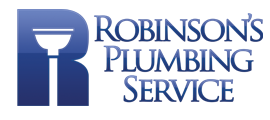The main sewer line carries waste from your house to your municipality’s sewage system. It’s well hidden, so you likely don’t give it much thought until there is a blockage that prevents plumbing fixtures from draining properly.
The result is water and raw sewage coming up through the drains because it has nowhere else to go.
An overflowing fixture has several consequences including an unpleasant odor, big mess, not to mention the cost of an expensive sewer line repair or sewer line replacement.
Homeowners can typically treat a clog in an individual drain with relative ease, but a clog in the sewer line requires a professional plumber to fix. It’s important to recognize a clog as soon as possible, especially if it’s in the main sewer line.
Common Problems Requiring Sewer Line Repair
A bath, shower or sink that’s slow to drain is one of the most common signs of a clog.
Another symptom occurs when the water in the toilet rises or bubbles while water is running from a nearby plumbing fixture. An overflowing toilet may be caused by a clog, although you’ll also need to investigate the possibility of a problem with the cut-off valve in the toilet tank.
Additional symptoms of a clog include the smell of raw sewage or loud gurgling sounds coming from your drain.
A single plumbing fixture with these problems probably indicates the clog is in the drain for that fixture. However, an issue that affects more than one fixture at the same time may suggest the clog is in the main sewer line.
Causes of Plumbing Problems Requiring Sewer Line Repair
Clogs are generally the result of flushing inappropriate materials down the toilet or kitchen sink.
Feminine hygiene products, disposable wipes and thick paper towels are some of the most common causes of a clogged toilet. These items should always be disposed of in the trash, regardless of the manufacturer’s claims.
The kitchen sink is also a common source of clogs, usually from various fats and greases. Animal fat solidifies when it cools, forming a waterproof clog. Even cooking oils that remain liquid at room temperature can prevent water from draining through a pipe.
Solid materials such as coffee grounds should be thrown in the trash, even if you have a garbage disposal.
Tree roots can clog a sewer line over time, as indicated by symptoms that slowly get worse. This is common in older houses with clay sewer pipes, which roots can crush in their search for water. The sewer lines in modern homes are typically made of PVC, which is more resistant to attacks from tree roots.
Preparing for Sewer Line Repair
The most important step in preparing your sewage system for a visit from a plumber is to prevent your plumbing fixtures from overflowing in the meantime.
A clog in the main sewer line will likely require you to shut off your home’s water supply temporarily.
Some houses have a sewer cleanout line that’s accessible by the home, which should be located outside near the house. The sewer cleanout line is a vertical white pipe with a cap sticking out of the ground. Remove this cap to relieve the water pressure caused by a clog.
Sewer Line Repair Treatment and Solutions
Your plumber’s first priority should be to determine the specific location of a clog in the sewer line. This task usually begins by asking you questions about the clog such as which drains are backing up, where the smells are coming from and when you first noticed it.
If you haven’t already done so, your plumber will need to locate the cleanout and open it to obtain easier access to the sewer line.
Sewer camera inspection
Video inspection may be necessary if your plumber is unable to locate the clog with a simple visual inspection.
This process involves pushing a camera through the drain until the clog is located. Once this step has been accomplished, the plumber can determine the appropriate solution.
Auger, water hose, and caustic chemicals
Homeowners can often clear a clog that only affects one fixture. Common treatment methods for this type of clog include the use of an auger to clear a clog or caustic chemicals to dissolve it.
It’s important to understand that these methods are inadequate and impractical for clearing a clog in the main sewer line.
Plumbers also use an auger, but it’s much larger than the one you may have. These augers can be more than 50 feet long and are usually mounted on a truck. They’re driven by electrical power in most cases.
An auger should remove the clog, but it won’t clean out your sewer line by itself. This process typically requires the use of a high-pressure water hose that sends a stream of water down the line to remove any remaining residue. An auger is a less expensive treatment option than the water hose, but it’s not as thorough.
Sewer line repair and replacement
Some blockages are the result of a sewer line that is broken or bent rather than a clog. In these cases, the plumber will need to perform sewer line repair or replace the damaged section.
Trenchless sewer line replacement is becoming a more popular option since it requires much less digging.
Professional Sewer Line Repair and Sewer Line Replacement
If you are unable to clear the drain clog yourself, you can count on our expert plumbers.
While sewer line repair is always the primary result, we may find that a sewer line replacement is necessary. We provide one of the best guarantees in the business, 2-year warranty on all work and parts.
